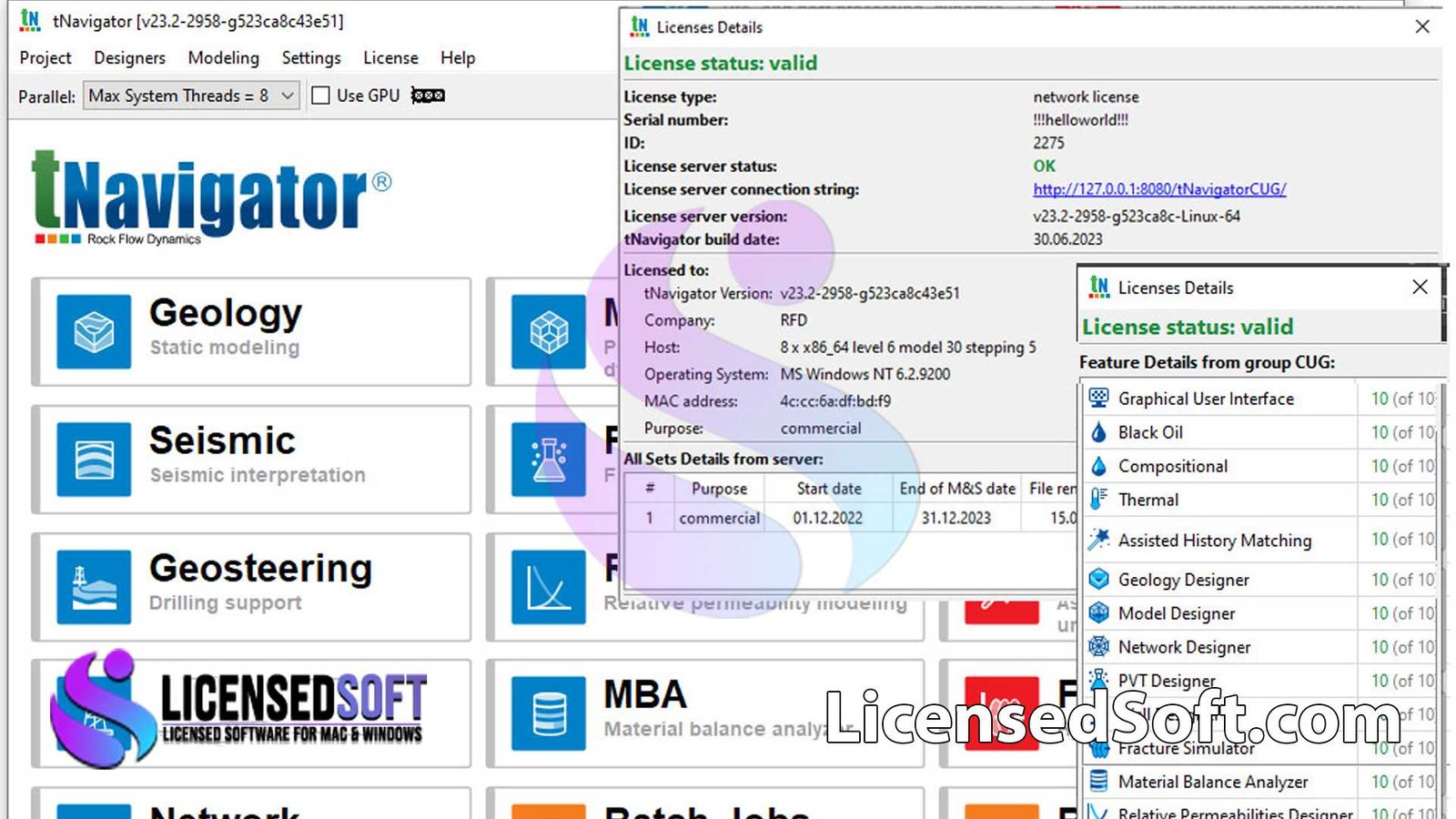RFD tNavigator 25 Full Version by Rock Flow Dynamics is the latest iteration of their comprehensive reservoir modeling and simulation platform. Designed to support the entire lifecycle of subsurface projects. You can also get Emeraude 5.6 Full Version from LicensedSoft.
It integrates seismic interpretation, geological modeling, dynamic simulation, and surface network optimization into a unified environment. You can also get KAPPA Carbone 6.2202 Full Version from LicensedSoft.

RFD tNavigator 25 Key Features:
While specific details for version 25 are not publicly available, based on previous releases, tNavigator typically includes:
- Advanced Simulation Capabilities: Support for compositional models, including CO₂ storage simulations with various activity coefficient models and equations of state like CPA-SRK.
- Enhanced GPU Acceleration: Utilization of NVIDIA GPUs for accelerated computations, improving simulation speeds.
- Integrated Modules: Comprehensive tools for geology, PVT analysis, well and network design, fracture simulation, and more, facilitating cross-disciplinary collaboration.
- Assisted History Matching (AHM): Advanced AHM tools to streamline the calibration of models against historical data.
- Cloud Computing Integration: Capabilities for remote desktop access to cloud machines, real-time calculation logs, and integration with cloud data storage.
RFD tNavigator 25 System Requirements:
For optimal performance, especially with large-scale models, the following hardware configurations are recommended:
- CPU: Dual Intel Xeon processors with 24–32 cores.
- GPU: NVIDIA RTX 40xx series or equivalent.
- RAM: 256–512 GB, depending on model complexity.
- Storage: High-speed SSDs for faster data access.
- Operating System: Windows 10/11 or Linux (64-bit).
For smaller models or educational purposes, high-performance laptops with Intel i7 processors, 32 GB RAM, and NVIDIA GTX 1070 or better GPUs are suitable.
Ideal Users
- Reservoir Engineers: RFD For dynamic simulation and optimization of reservoir performance.
- Geoscientists: For geological modeling and seismic interpretation.
- Production Engineers: For designing and optimizing surface networks and well operations.
- Research Institutions: For academic studies in reservoir engineering and energy resource management.







